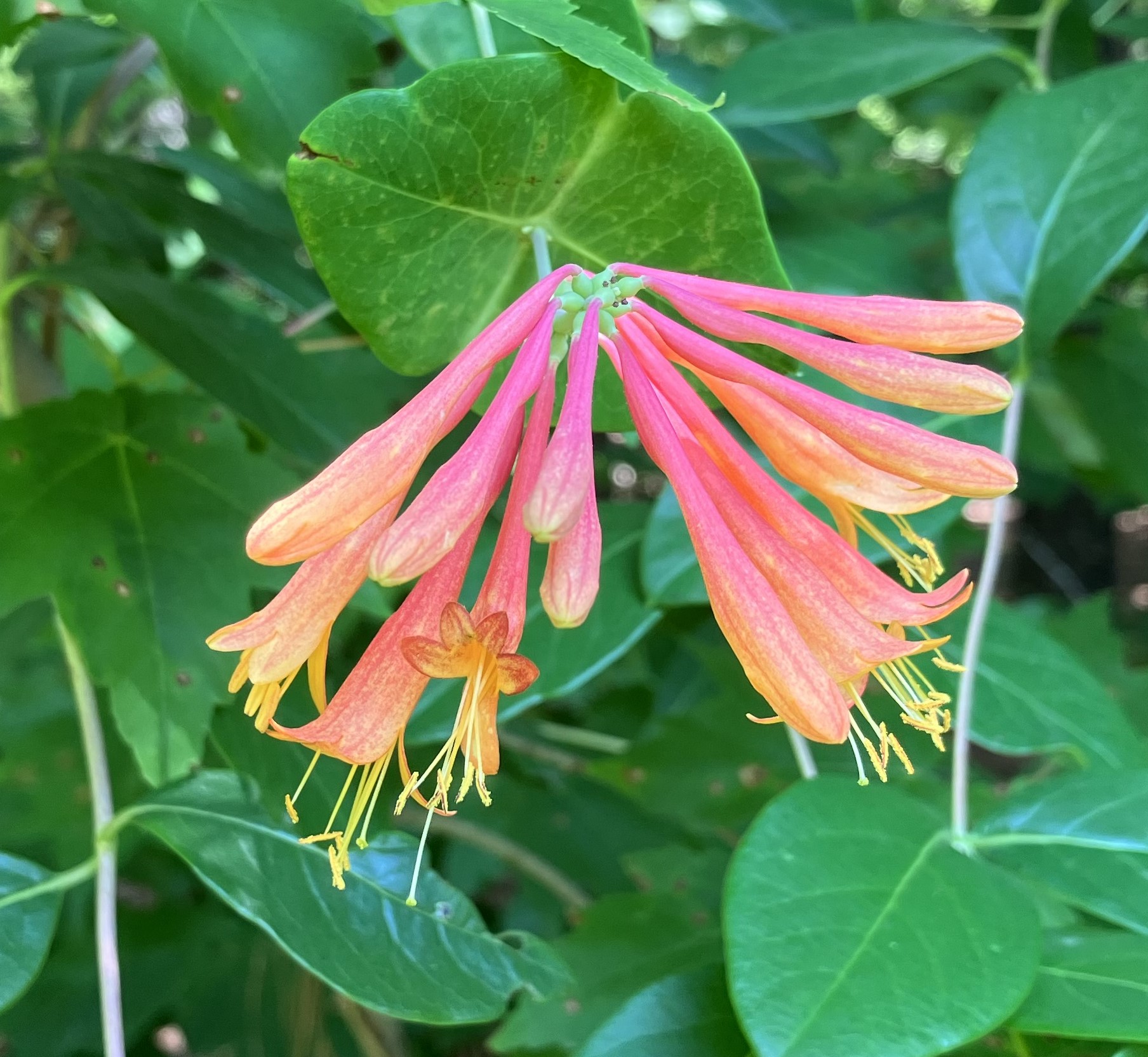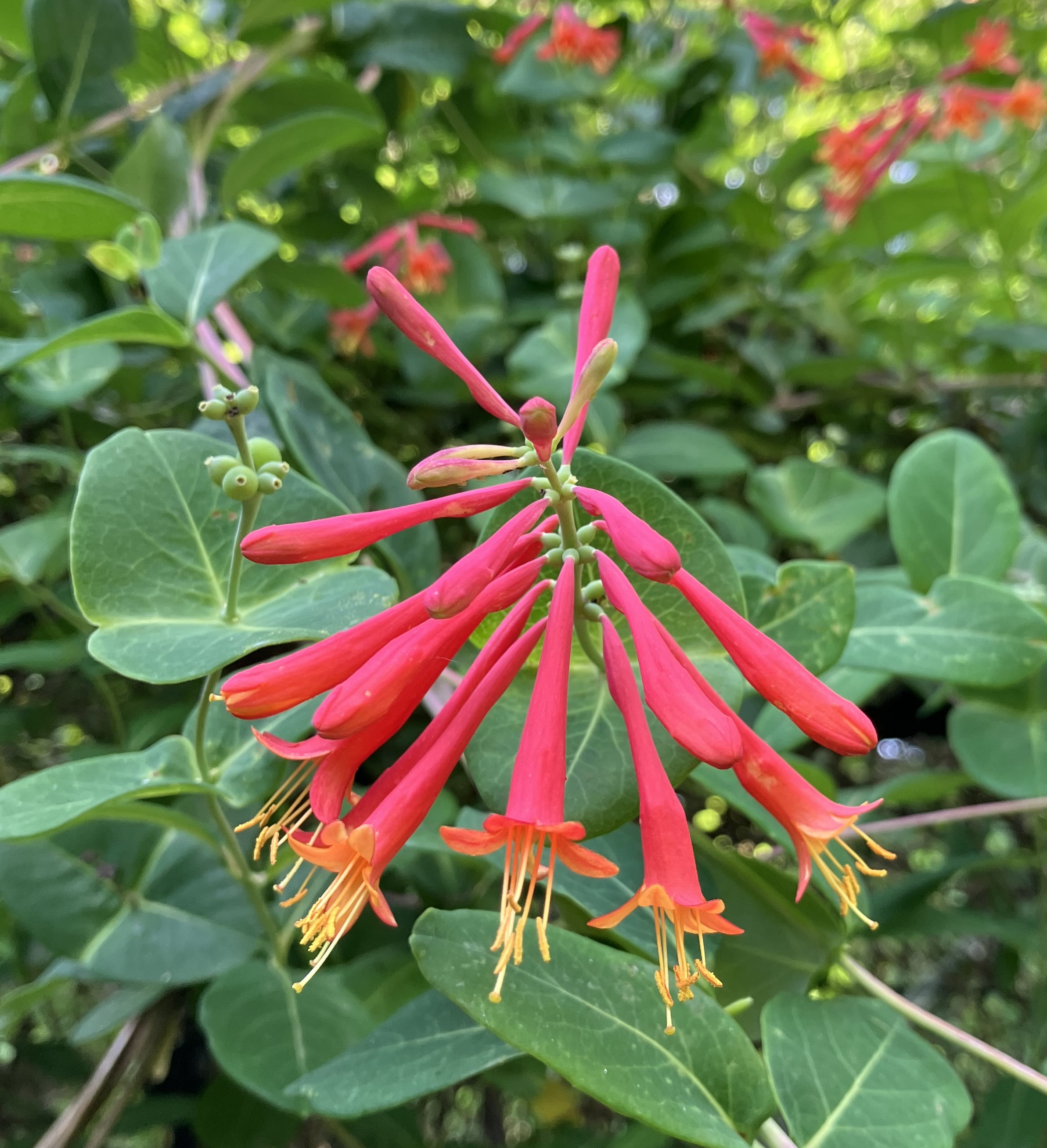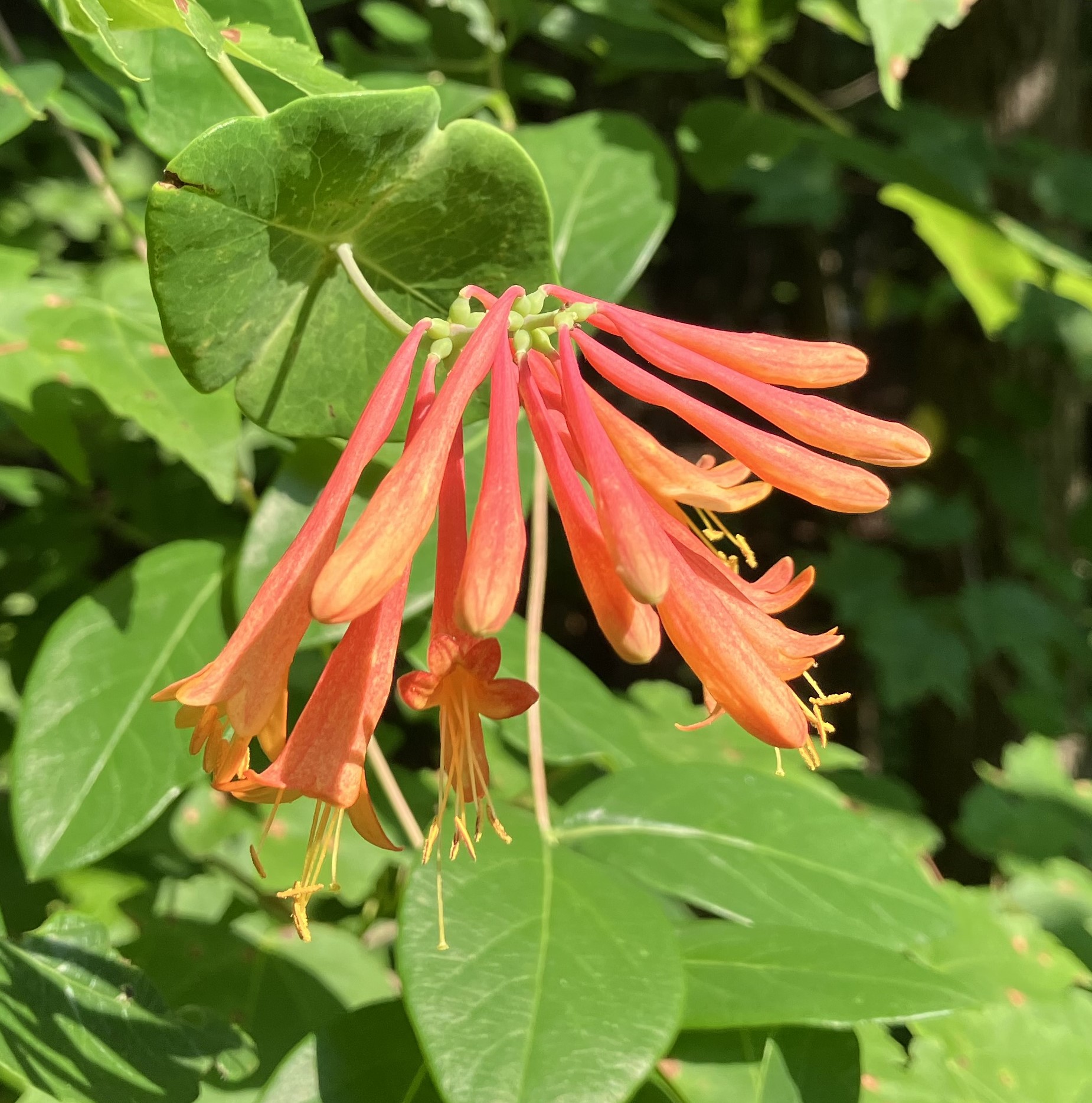
The edge between the woods and the more open garden seems to be a favored growing area for honeysuckle vines. I try to weed out the invasive Japanese honeysuckle (Lonicera japonica) whenever I see it, but I am happy to leave the native coral honeysuckle (Lonicera sempervirens) for the hummingbirds. A couple of weeks ago, I noticed an L. sempervirens vine with unusually colored flowers.
The flowers of wild L. sempervirens vines are typically red on the outside with orange/yellow on the inside, and the red pigment has a soft, sometimes almost pinkish hue. Some selected cultivars such as ‘John Clayton’ (see #5 here) have completely yellow flowers.

The unusual vine had several flower clusters this year, and all exhibited reduced red pigment on the outside, making the flowers appear orange. Since multiple flower clusters showed the same phenotype, I am hopeful that this will be a stable characteristic of the plant in future years.
So, where did the unusual coloration come from? This could be a spontaneous mutation or environmental effect which has altered the levels of various carotenoids or flavinoids in the flowers, but I do grow the yellow L. sempervirens forma sulphurea ‘John Clayton’ on a pergola near the house (See #5). It seems plausible that this plant is the result of a cross between a typical plant and ‘John Clayton’ (either an F1 or more complex multigeneration cross). We certainly have enough hummingbirds to do the job.


For at least fifty years Lonicera sempervirens has been one of my favorite native plants.
LikeLiked by 1 person
Me too. I remember the first time I saw one flowering at the edge of some random patch of woods. It looked like it belonged in a tropical garden.
LikeLiked by 1 person
Lonicera sempervirens is native to the region of Oklahoma that I went to, but I never saw it. I brought back Lonicera albiflora. It is nothing special, but I happen to like it because it came from Oklahoma. ‘Major Wheeler’ is a cultivar of Lonicera sempervirens that is rare, but sometimes available here. It is likely rare because no one knows what it is.
LikeLiked by 1 person
‘Major Wheeler’ is reasonably well known around here; I think it may have originated in NC. I like it because of its extended flowering season. L. sempervirens in general is very popular with local native plant growers, for obvious reasons, and it is a common(ish) wildflower.
LikeLiked by 1 person